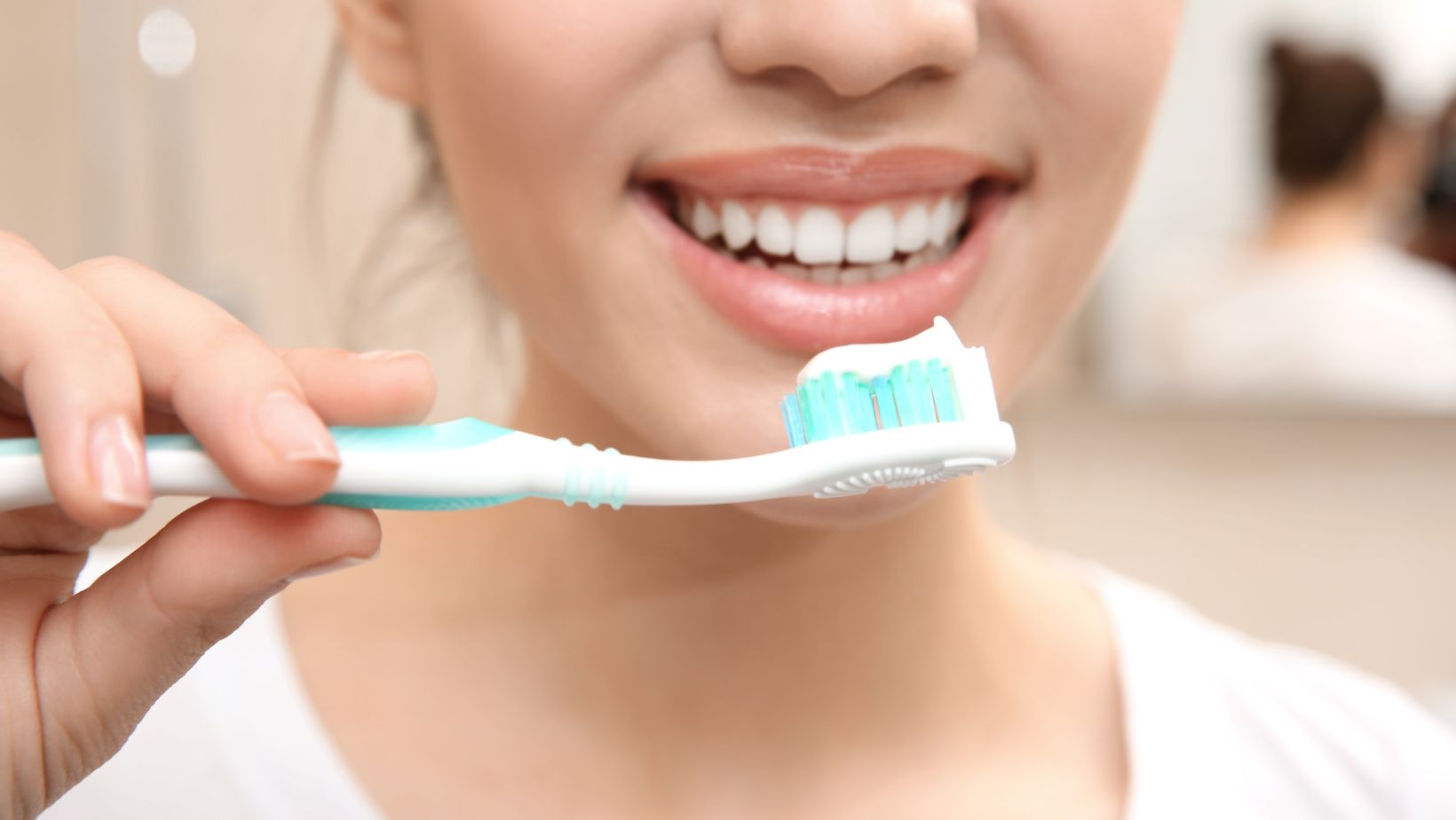Last Updated on August 27, 2025 by Nala Thorpe
Ever wonder why your teeth still feel sensitive even though you’re using that fancy remineralizing toothpaste religiously? Here’s the thing—and this might surprise you—your toothpaste is probably fine. The real problem? You’re missing the secret sauce that makes it actually work.
I used to think buying the most expensive toothpaste would solve my enamel problems. Spoiler alert: it didn’t. What actually changed everything was learning these ridiculously simple daily tweaks that turn any decent toothpaste into an enamel-repairing powerhouse.
These aren’t some complicated biohacking protocols or weird wellness trends. They’re evidence-based habits that take zero extra time but deliver incredible results.
Here’s the science behind why timing matters: your teeth go through a natural demineralization-remineralization cycle daily. When you eat or drink, acids weaken your enamel (demineralization). Your saliva and toothpaste minerals then repair this damage (remineralization). Research shows that maximizing fluoride contact time can increase enamel repair effectiveness significantly. The key is working with your mouth’s natural repair cycle, not against it.
Ready to finally make your toothpaste earn its keep? Let’s jump in.
The Game-Changing Morning Routine (Takes 2 Minutes, Works for Life)
Most of us treat morning brushing like we’re in some kind of speed contest. Big mistake. Here’s how to turn those rushed 2 minutes into serious enamel repair time.
Start Clean, Not Complicated Before you even touch your toothbrush, swish some plain water around your mouth. Nothing fancy—just tap water. This washes away overnight gunk so your toothpaste can actually reach your teeth instead of fighting through bacterial buildup.
The Perfect Brush Technique (Yeah, You’re Probably Doing It Wrong) Squeeze out a pea-sized dollop of toothpaste—seriously, more isn’t better here. Now comes the important part: gentle circular motions, not that aggressive back-and-forth scrubbing you learned as a kid. Think massage, not sandpaper. Spend 30 seconds in each corner of your mouth.
Here’s why this matters: harsh brushing actually strips away the minerals you’re trying to build up. Counterproductive much?
The Don’t-Rinse Rule That Changes Everything This is where most people mess up big time. After brushing, just spit—don’t rinse with water. I know, I know, it feels weird at first. But that thin film of toothpaste left on your teeth? That’s pure liquid gold for remineralization.
The 4-Minute Window (Trust Me on This) After spitting, set a timer for 4 minutes. No eating, no drinking, no nothing. This gives fluoride time to penetrate your enamel properly. If you absolutely must drink something, tiny sips only—no swishing around.
Hydration Strategy That Actually Matters Once your 4 minutes are up, drink water like it’s your job. Good hydration means better saliva production, and saliva is basically nature’s mineral delivery service for your teeth.
This whole routine works because you’re maximizing contact time between fluoride and your enamel. Most people notice less sensitivity within two weeks. For those wanting to level up their toothpaste game even further, check out these proven toothpastes that enhance remineralization results.
Evening Habits for Maximum Overnight Repair
Your nighttime routine is where the real magic happens. While you sleep, your mouth basically turns into a mineral repair shop—but only if you set it up right.
Timing Is Everything (The 60-Minute Rule) Here’s something most people don’t know: brushing right after dinner is actually terrible for your teeth. Your mouth becomes acidic after eating, and brushing during this window can damage softened enamel. Wait a full hour after your last bite before touching that toothbrush.
The Bedtime Lock-In Method Brush for 2 minutes using the same gentle technique from your morning routine. Then—and this part’s crucial—spit but don’t rinse again. You want maximum fluoride concentration working on your teeth all night long.
Set Yourself Up for Success After brushing, you’re done eating and drinking for the night. Keep a small glass of water by your bed for emergencies, but avoid anything that requires swishing or gargling.
Why does this work so well? During sleep, your saliva flow decreases, which means less dilution of protective minerals. It’s like giving your teeth an 8-hour spa treatment.
Diet Tweaks That Supercharge Everything
What you eat—and when you eat it—can either support or sabotage your remineralization efforts. These simple adjustments make a huge difference.
The Pre-Brush Calcium Trick About 30 minutes before your evening brush, have a small calcium-rich snack: chunk of cheese, handful of almonds, or some leafy greens. This raises your mouth’s pH and provides raw materials for enamel repair. The timing matters though—too close interferes with fluoride, too far away wastes the benefit.
Hydration Game-Changer If you can swing it, drink alkaline water throughout the day (pH around 8-9). Regular water works fine too, but alkaline water helps neutralize acid-producing bacteria. The key is staying consistently hydrated because dehydration tanks your saliva production.
Strategic Food Timing Skip acidic foods for 2 hours before bedtime brushing. That means no citrus, tomatoes, wine, or soda in the evening. These create an acidic environment that fights against your toothpaste’s mineral-building efforts.
The Vitamin Connection Most People Miss Make sure you’re getting enough vitamin D through sun exposure, supplements, or fatty fish. Your body needs vitamin D to actually use calcium effectively. Most adults benefit from 15-20 minutes of daily sun or 1000-2000 IU supplementation. For comprehensive nutritional support, explore the best vitamins for teeth and gums that work alongside your daily routine.
These dietary strategies create the perfect storm for remineralization success.
Your 30-Day Implementation Plan (Because Habits Beat Perfection)
Knowing what to do is easy. Actually doing it consistently? That’s where most people fail. This progressive approach sets you up for long-term success.
Weeks 1-2: Master Morning Mode Focus only on nailing the morning routine. Track it daily—phone app, sticker chart, whatever works. Don’t try to change everything at once because that’s a recipe for giving up.
Weeks 3-4: Add Evening Excellence Once morning habits feel automatic (usually takes about 14 days), layer in the evening protocol. The 60-minute wait rule and no-rinse bedtime brushing.
Family Accountability System If you have kids or a partner, make this a team effort. Visible tracking systems work best—kids love sticker charts, adults might prefer apps or simple checkmarks on a calendar. Families that track together have an 85% higher success rate than solo efforts.
How to Know It’s Working Watch for reduced sensitivity when drinking cold beverages, less plaque buildup between dental visits, and smoother tooth surfaces. Your dental hygienist might even comment on improvements at your next cleaning.
Frequently Asked Questions
How long should I wait before rinsing after brushing? Don’t rinse at all. Just spit out excess toothpaste and let the fluoride film do its work. This maximizes mineral absorption for 30+ minutes after brushing.
When’s the absolute best time to brush for enamel repair? Morning: right when you wake up. Evening: exactly 60 minutes after your last meal. This timing optimizes fluoride uptake while protecting against acid damage.
Can I drink water right after brushing with remineralizing toothpaste? Wait at least 30 minutes if possible. Water dilutes the protective coating before it’s fully absorbed. If you must drink, take tiny sips without swishing.
What foods actually help my toothpaste work better? Calcium-rich options 30 minutes before brushing: cheese, almonds, leafy greens. These raise mouth pH and supply building blocks for repair. Avoid acidic foods 2 hours before bedtime brushing.
How can I tell if this routine is actually working? Less tooth sensitivity within 2-3 weeks, reduced plaque at dental cleanings, smoother tooth surfaces. Your hygienist may notice improved enamel health within 30 days of consistent habits.
Is this safe for kids and teens? Absolutely, but supervise young children to prevent swallowing toothpaste. Use age-appropriate amounts but follow the same timing principles. Make it engaging with family tracking and celebration milestones.
Pro Tip
Switch to a soft-bristled brush if you haven’t already—medium and hard bristles actually work against remineralization by stripping away protective minerals. Use gentle circular motions like you’re polishing delicate jewelry, not scrubbing a dirty pan. Replace brushes every 3 months or after being sick to maintain optimal mineral delivery.
Final Thoughts
Your current toothpaste probably isn’t the problem—your habits around it are. These simple timing and technique changes transform ordinary brushing into a powerful enamel repair system without spending an extra dime.
Start with just the morning routine for your first week. Once that feels natural, add the evening protocol. Within a month, you’ll wonder why nobody ever taught you this stuff before.
The best part? These aren’t complicated wellness hacks that require perfect execution. They’re simple adjustments that fit into routines you already have. Your teeth will genuinely thank you for finally giving your toothpaste the support it needs to do its job properly.




